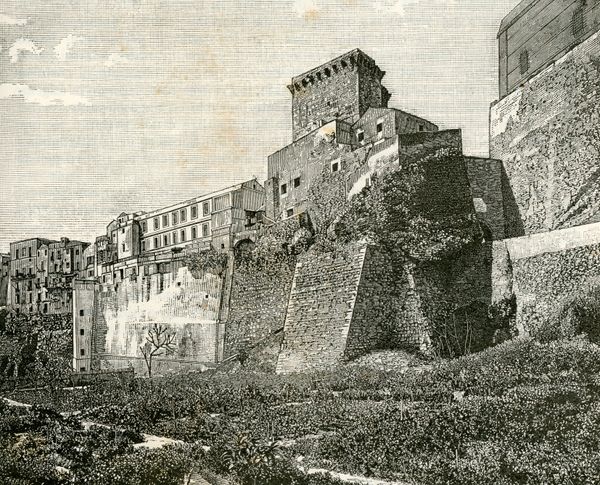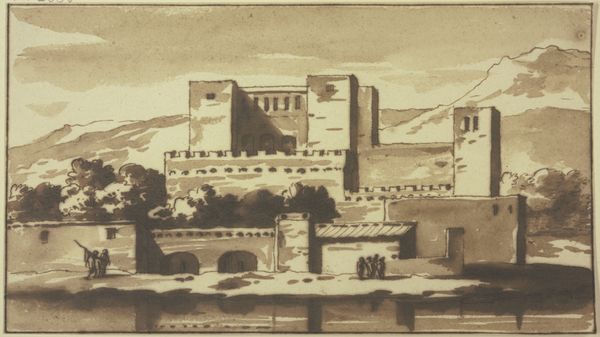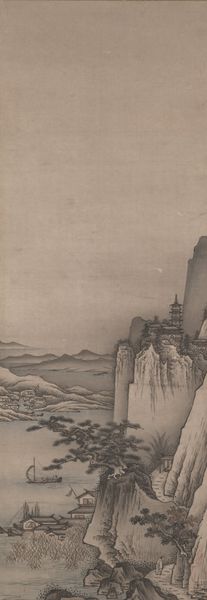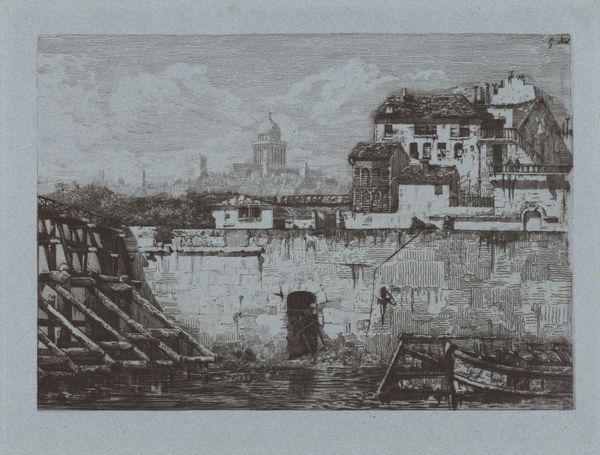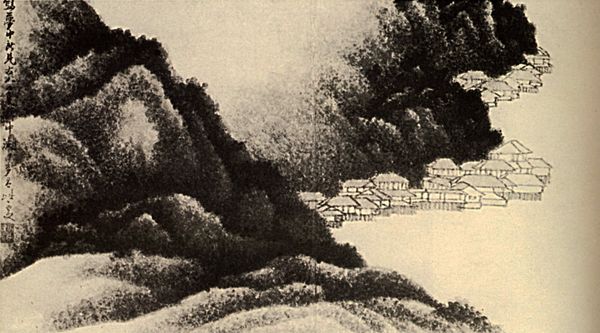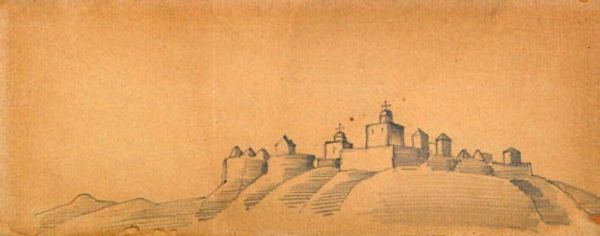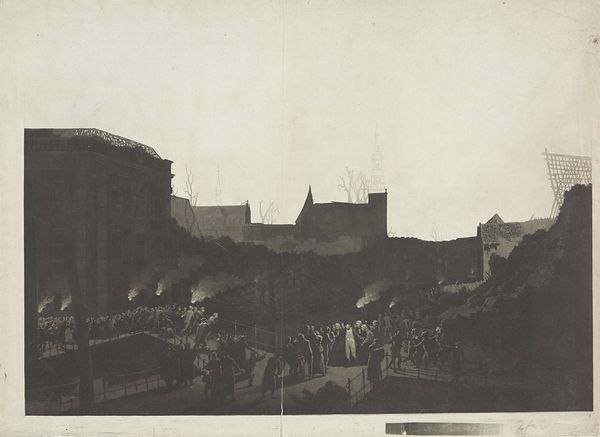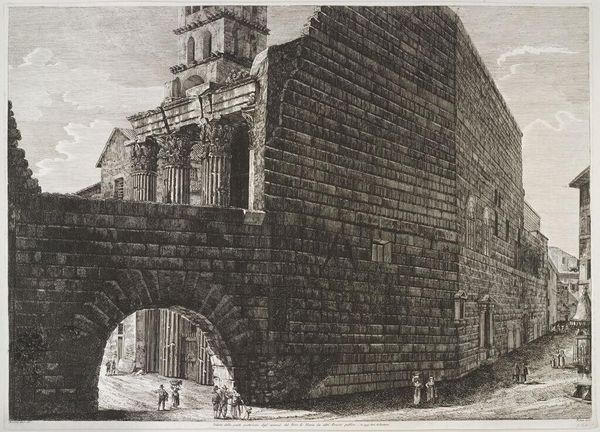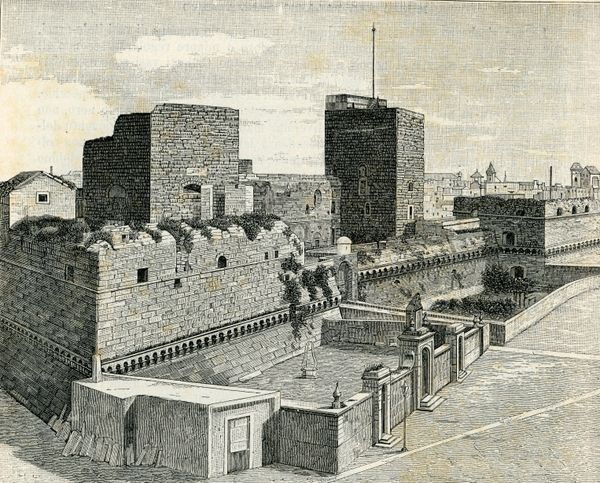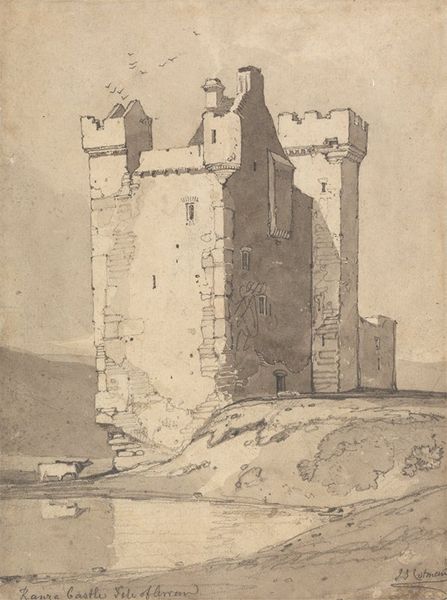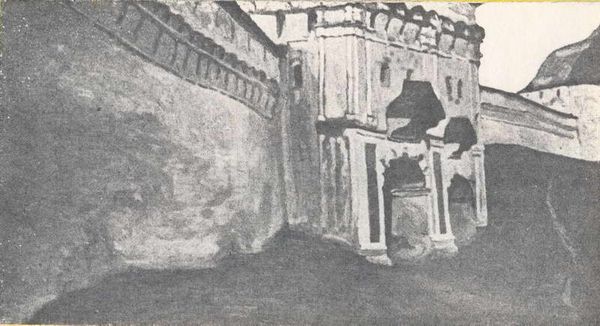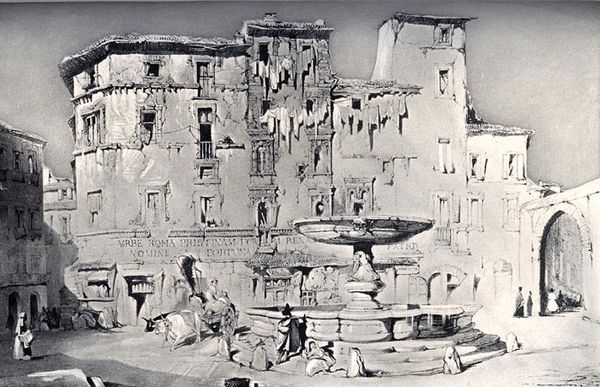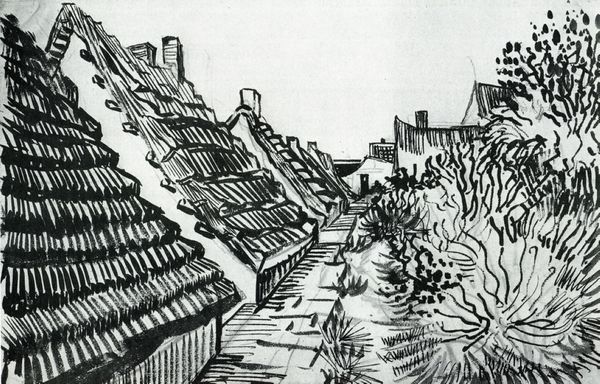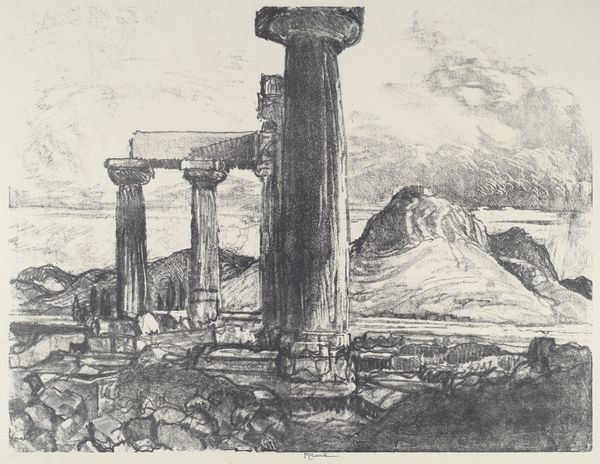
Copyright: Public domain
Curator: Standing before us is "Sanctuaries," a 1924 ink drawing on paper by Nicholas Roerich. The piece reflects Roerich’s fascination with Asian art and symbolism. Editor: The somber color and imposing, fortress-like structures make me think of resilience. The way it’s built right into the mountainside... talk about a statement of human labor and permanence. Curator: Indeed. Roerich was deeply interested in the intersection of art, spirituality, and culture. His travels through Asia heavily influenced his artistic style, with these drawings emerging from expeditions through the Himalayas. Editor: Knowing that this comes from the Himalayas enriches the way I see it. Ink drawings like these were really crucial because they captured landscapes for popular consumption that were completely unknown at the time, let alone accessible. Think of the sheer difficulty and physical labor of drawing *on-site* in those conditions! Curator: He saw these landscapes as sacred spaces, and that informed his artistic and political goals. He would champion the protection of cultural sites during wartime, arguing that their destruction would impact global cultural memory. Editor: Fascinating! You can definitely read a sense of reverence in how deliberately the structures are portrayed, even architecturally. It almost has a modern quality with its cubic, tiered formations ascending to the mountain. What were his primary means for distributing images like these? Were they meant for a wealthy elite? Curator: Not at all. His work often appeared in journals, books, and exhibitions across the world, effectively democratizing access to images of remote spiritual and cultural centers. In doing so, Roerich was interested in influencing broader societal values. Editor: So its accessibility factored into his political work. The symbolism here works on different levels—a literal architectural image that also communicates human effort in adapting to these difficult lands. Curator: Absolutely. By creating and disseminating these images, Roerich fostered international appreciation and a commitment to protecting global cultural heritage sites. Editor: Considering all the artistic choices behind "Sanctuaries," especially the commitment to accessibility in its creation and dissemination, makes it even more powerful to see today. Curator: Yes, it highlights the essential public role that art plays in preservation and memory.
Comments
No comments
Be the first to comment and join the conversation on the ultimate creative platform.
